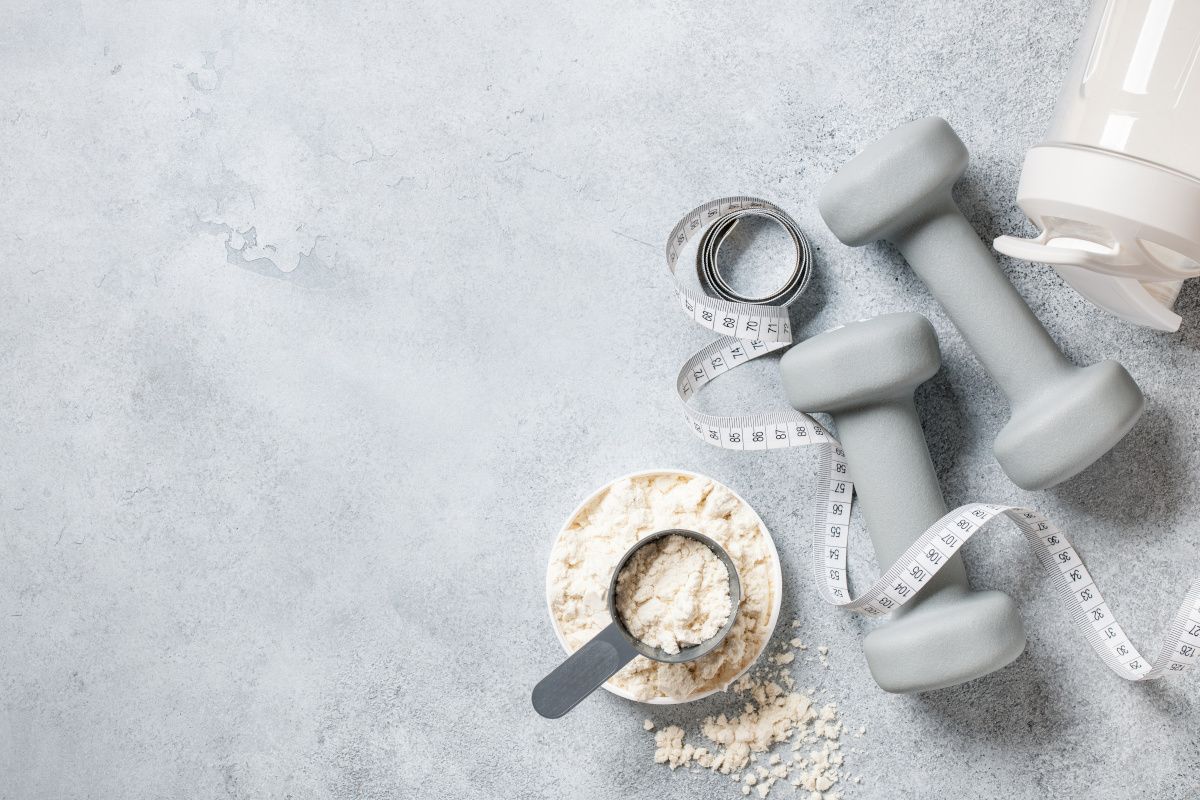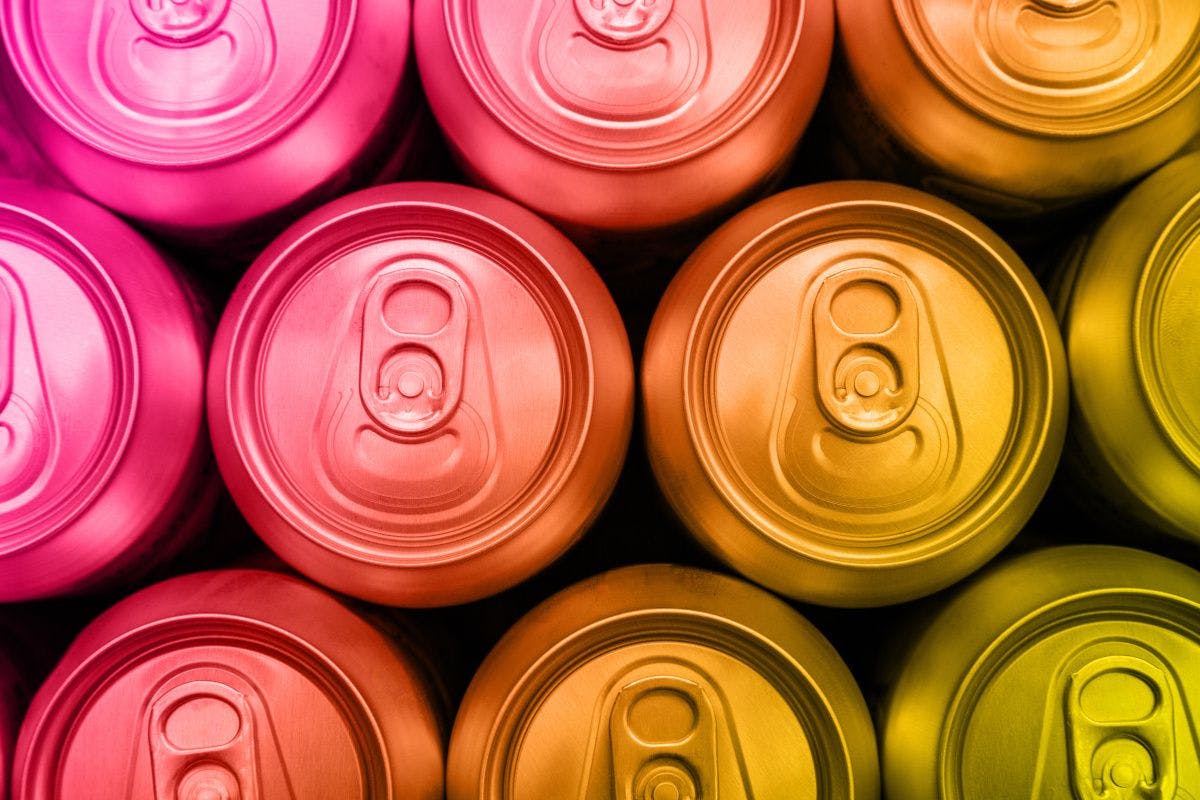Seeking longevity with sports nutrition and weight management
As consumers embrace active lifestyles and a long-view on health, sports nutrition and weight management products have an opportunity for continued growth.
Photo © AdobeStock.com/ffphoto

If you read Nutritional Outlook’s Ingredient to Watch coverage1, you’ll remember that the sports nutrition category continues to see major growth because the space is becoming more diverse in terms of the consumers buying the products, and what they are buying the products for. The dedicated athlete can still get high quality ingredients that help improve their performance and recovery, but the more casual fitness enthusiast or newcomer does not necessarily have the same demands. Therefore, more accessible sports nutrition products have come to market catering to the average consumer.
This is important because sports nutrition more broadly is becoming less focused on results like muscle growth and more about maintaining a healthy lifestyle, which creates an opportunity for brands to really branch out and engage with a larger base of consumers. Mark Faulkner, founder and CEO of Vireo Systems (Madison, TN), maker of Con-Cret creatine gummies, for example, sees his products as something that can benefit so many consumers outside of the gym.
“Creatine is a molecule that really is important for overall health, and that does necessarily take it beyond the gym. Athletes have always known that it provides energy to the muscles and helps the muscles perform better, get stronger, have better endurance, have better recovery but that is also similar to other cells in the body,” says Faulkner.
“Your body has to have creatine to function optimally,” he explains. “Your brain uses 20% of the body’s creatine just to think, the immune system is dependent on creatine to keep us healthy, and to power T cells…But the body only makes half of [the creatine it needs] because it knows you’re supposed to get creatine from your diet. Unfortunately, many people in America do not have a creatine rich diet, and so many people…need a supplement to help make sure that they maintain not just optimal muscle energy, but optimal cognitive energy, immune energy and just overall health. Your heart [even] needs creatine to beat.”
Creatine is only one of the more recent examples of how ingredients known for their sports nutrition benefits can be applicable across multiple health benefits. Probably the most popular ingredient to break out of sports nutrition and proliferate across food and beverages categories is protein. For example, while the recommended daily intake for protein is 0.8 grams/day, this is considered far too low, particularly for aging people. In fact, research shows that poor protein intake can lead to a decline in muscle mass and strength, known as sarcopenia, and that the decline can be attenuated with a higher intake of protein.2
This research is important because it demonstrates the need for consistent supplementation throughout one’s lifetime, which only helps with customer retention as customers get older and continue to require quality, reliable supplements. At the same time, these products help people maintain an active lifestyle for longer which is crucial for one’s health and longevity.
Because of the diverse range of fitness consumers, there’s also a diverse range of avenues to get exercise, with the gym being only one of many potential ways be active and stay healthy.
According to an article from Murphy Research’s director of syndicated research, Sarah Marion, PhD, volatility in the fitness industry is huge following the pandemic as consumers experiment with fitness habits, moving away from traditional gym or health club memberships to home workout and organized sports leagues. The pandemic really unlocked the potential for what people can do at home for fitness, and some have not moved back to the gym. A survey from Murphy Research found that compared to 2019, the percentage of workouts taking place at the gym for those who work out at a gym or studio at least weekly, dropped by 10% in 2022, meaning that more workouts are taking place at home or outdoors.3
More recent trends observed by Murphy Research show that Millennials, the oldest of which are reaching middle age, consistently outspend Gen Z on nutrition and fitness, and are the generation currently driving fitness trends. Trends show that the top favorite fitness activities for Millennials involve high intensity “sweat sessions” such as running, basketball, football, and soccer. Murphy research also cites the popularity of weight training, hiking, swimming, and yoga.4 The point is that within a single generation of consumers, there are a myriad of fitness options, all of which may have different needs in terms of sports nutrition products. As they age, these needs will continue to shift but ingredients like protein and creatine will likely remain a part of their regimen.
Interestingly, Marion points out the Millennials are highly self-directed in their fitness, and while they enjoy the social aspect, they are more likely to value fitness in its own right, seeing it as a tool for stress relief, weight management, and personal time, compared to Gen Z. The fact that Millennials are finding time for fitness bodes well because their continued engagement in being active likely means continued supplementation.
Weight Management
While the weight management category can be subject to controversy and products marketed toward weight management can sometimes be viewed with skepticism, there is definitely overlap between physical fitness and weight management in the dietary supplement space. As Marion points out, Millennials turn to fitness as a way to manage their weight and feel better. This bears out in the sales trends too. According to data from the market researcher SPINS, the 52 weeks ending December 3, 2023, five of the ten top-selling ingredients in the weight loss category of the mainstream multioutlet channel were protein ingredients, which also dominate the performance nutrition category.1
Fact is that people who want to lose weight know that physical fitness is the best and most healthy way to do so. Protein can aid in achieving positive results from exercise, such as muscle growth, while also promoting weight loss in other ways. Research shows that high protein diets were associated with greater weight loss, fat mass loss, and preservation of lean mass.2 One way that protein aids in weight loss is through satiety, with research showing that high protein meals of at least 30 grams of protein resulted in higher levels of post-prandial fullness, as well as better regulation of food cravings. When paired with exercise, high protein consumption can therefore help people comply with a healthier diet, eat less often (ie. less unhealthy snacks), while also gaining lean mass and muscle through exercise.
Other popular ingredients in the weight loss category such as apple cider vinegar (ACV) and glucomannan offer similar benefits to consumer. Glucomannan, a non-digestible carbohydrate that has been approved as a dietary fiber by FDA. Due to its hygroscopic qualities, it can swell rapidly in the stomach, creating feelings of fullness. At the same time, because it’s a prebiotic, it can have a positive impact on the gut microbiome, and research has shown that significantly reduce fasting blood glucose and cholesterol levels.5 ACV is also known for its ability to increase satiety, and more recent research has found that supplementation with ACV may actually improve anthropometric and metabolic measures in overweight subjects.6
Clearly, consumers are looking for healthy and holistic ways to lose weight, adopting fitness routines and supplement regimens that not only help them shed a few pounds but also help them reduce the risk of long-term health problems such as cardiovascular disease and metabolic syndrome.
Reference
- Krawiec S. Ingredients to Watch: The 2024 List. Nutritional Outlook. 2024, 27 (1), 10-27.
- Phillips, S.M.; Chevalier, S.; Leidy, H.J. Protein “requirements” beyond the RDA: implications for optimizing health. Applied Physiology, Nutrition, and Metabolism, 2016, 41 (5). DOI: 10.1139/apnm-2015-0550
- Marion, S. Moving past the pandemic: How fitness habits have changed. Health & Fitness Association. January 26, 2023. www.ihrsa.org/improve-your-club/moving-past-the-pandemic-how-fitness-habits-have-changed/ (accessed 2024-03-25).
- Marion, S. Millennials are still health and fitness trendsetters. Nutritional Outlook. March 26, 2024. www.nutritionaloutlook.com/view/millennials-are-still-health-and-fitness-trendsetters (accessed 2024-03-25).
- Mah, E.; Chen, O.; Liska, D.J.; Blumberg, J.B. Dietary supplements for weight management: A narrative review of safety and metabolic health benefits. Nutrients, 2022, 14 (9), 1787. DOI: 10.3390/nu14091787
- Abou-Khalil, R.; Andary, J.; El-Hayek, E. Apple cider vinegar for weight management in Lebanese adolescents and young adults with overweight and obesity: a randomised, double-blind, placebo-controlled study. BMJ Nutrition, Prevention & Health, 2024, e000823. DOI:10.1136/bmjnph-2023-000823

Prinova acquires Aplinova to further increase its footprint in Latin America
April 7th 2025Prinova has recently announced the acquisition of Brazilian ingredients distributor Aplinova, which is a provider of specialty ingredients for a range of market segments that include food, beverage, supplements, and personal care.




















